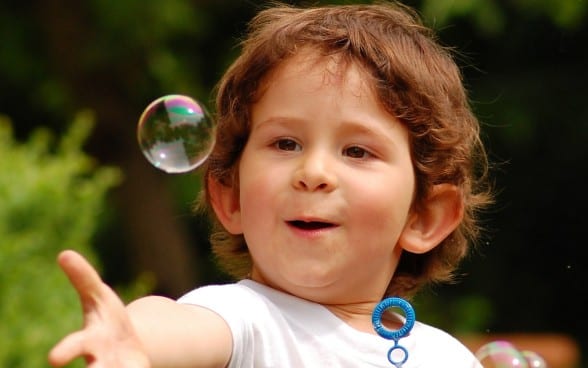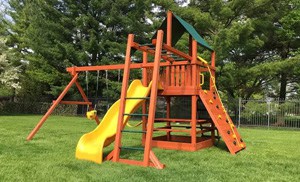The first step for any problem is to acknowledge that there is one. Although the problem may not be primary with you, as a parent, children have negative thoughts too. Negative thinking does not only plague adults; it greatly alters children as well. Being able to identify, create a plan, and act to prevent negative thinking in children are great skills to have even if you do not currently have children. This issue is such a big deal due to long lasting effects that could occur.
According to child psychologist, Tamar E. Chansky, negative thinking bias in children quickly becomes the “default”, resulting in negative thoughts being his or her first and final word. Some children may not understand that they have an option to not internalize these thoughts, and begin to see these negative thoughts as absolute truths. Fortunately, parents, guardians, or the like can help!
The first step to helping is the ability to spot negative thoughts in a child who may regularly exhibit these signs or only occasionally. Below is a list of warning signs that children often express when negative thoughts are present, according to Chansky.

Signs
- Exaggerating and extending the importance of an adverse event
- Blaming self for something that was caused by external circumstances; blaming big for small things
- Generalizing that whatever happened always happens
- Becoming easily angry with self
- Not trying activities unless sure can excel
- Thinking bad things always happen, good things never happen
- Trouble tolerating mistakes, disappointment or losing
- Shutting down in the face of any obstacle
The next step is to develop a proper strategy to overcome this unfortunate occurrence. First think of your child, who he or she is, so that when attempting to help, you are being accurate and not generalizing that all children can be helped in the same way. Below you’ll find a few strategies to help get to the root of the issues and accurately tackle the problem.
Strategies
Distinguish between negative and accurate thoughts
For kids, telling the difference between negative and more accurate thoughts is difficult (it’s difficult enough for adults!). One simple way to help young kids make the distinction is by using stuffed animals to represent each line of thinking. Chansky says: “The cranky puppy and the happy bear can both be looking at the same situation; spilling the milk, and have two very different versions of the story.”

If your child is older, instead of stuffed animals, try this: take a piece of paper and draw a line down the middle. On one side, write “Negative Thoughts or “Meany Brain Thoughts.” On the other side, write “My Good Thoughts” or “Smart Thoughts.”
Becoming an Optimistic Thinker
Teaching children optimism is key to addressing negative thinking. A good example by Chansky is this: “Say two kids are at an ice cream shop and their rocky road slips off the cone. One exclaims, “It wasn’t on right, so it fell. I want another one.” The other child says, “Why does this always happen to me? This store always does it wrong. Everything’s ruined. This is the worst day of my life.”
In the first response, the child is an optimistic thinker. He or she sees the problem, relays the facts, and develops a solution. The pessimistic (second response) child incorporates outside information that may have nothing to do with the accidental situation the child is now in, blaming the occurrence on extraneous reasons, making a bigger hiccup of a problem that was so simple, plain, and merely uninfluential into a huge deal. that probably affected the child’s entire day, if not more. (Which can most likely be related to some if not most adults as well!)
According to Chansky, Parents can play the “Unfortunately, Fortunately” game with their kids. Together with your child, come up with “five sticky situations,” which you write down on cards and put in a hat. Each person then pulls out a card and says the unfortunate situation (Chansky uses the example: “Unfortunately, the movie I wanted to see was sold out”). The other person responds with a fortunate perspective (“But fortunately, I went to see another movie”). Then you go back and forth, each mentioning unfortunate and fortunate circumstances.
The next time your child is going through a difficult situation, you might say, according to Chansky, “There are a lot of ‘unfortunatelys’ stacking up. Can we see if there are any ‘fortunatelys’ in this situation?” More plainly, have your child and yourself begin to focus on the positive instead over overplaying the negative.
A good example of the negative overplay is when people tell a story or the news, the information that tends to be the most appealing is the negative, but yet it affects us more negatively than positively as well. If we begin by building our children’s positive thinking and evaluation up this could lead to better outlooks on life and also to better coping techniques for the negative information adults and children are forced to digest daily, throughout their entire lives.
Building distance from negative thoughts
It’s also important to help your child get “some distance and perspective” on a situation. To do so, try avoiding saying that they’re being negative. Instead, blame the “negative brain.” (This also makes you an ally, Chansky says, in helping defend your child against this “troublesome third party of Mr. No—the real bad guy ruining her day.”)
According to Chansky, this task restarts the child’s negative thought processing. It allows the child to think of negative thoughts as untrue, decreasing the negative thoughts validity and allows the child to think of these thoughts as annoying and as an upsetting voice that does not need to exist.
Ask your child to pick a name for their negative brain. Chansky gives the following examples: Mr. Sad, Meany Mouse, Fun Blocker. Have them draw the character and create a voice, too. Plus, they can brainstorm ways to talk back to that negative brain: “You’re not the boss of me; you make me feel bad; I’m not listening to you; you see everything as awful; you need new glasses!”
Chansky also provides these examples on how to start the negative brain naming conversation. You might say: “Remember when you said you were ‘stupid’ because you drew on the table by accident? You don’t feel that way now, right? But what would you call that voice in your head that made you feel that way then?”
The goal is not to halt, deny, or fault these negative thoughts, but to better deal with them and recreate how we interpret and how often these thoughts occur. Below is a quote from Chansky herself to explain this goal in her own words:
Surround Your Child with Positivity
While it may seem impossible at times, surrounding your child with positivity allows him or her to see that the world is not all negative. Things as simple as allowing your child to make friends and have fun can boost his or her self esteem and increase the chances of having a positive outlook on life. Also, studies have shown that depression and negative thinking increase due to lack of sunlight and fresh air.

Sunlight provides vitamins that boost mood and positivity allowing a child to be as capable as possible to live a more fulfilling, positive lifestyle. Doing small, simple things can add up, slowly changing your child’s thinking processes. Allow your child the time to play outdoors instead of on electronics, allow him or her to engage with other children while playing outdoors instead of sitting in front of the television. Together with a positive environment and effective problem-solving skills we can work together to improve the thinking of the generations to come.
It is true that children see and and mimic others. Furthermore, if a child sees who he or she looks up to (i.e. an adult, parent, sibling, etc.) thinking and acting negatively, it is very likely that the child will reciprocate this task. Also, the longer the habit of negative thinking continues, the harder it will be to reverse. Like any other bad, negative habit, a bad way of thinking is hard to reverse. It is underestimated very often how much our thinking influences our physical actions. Positive thinking leads to positive actions which leads to a happier life. Allow yourself to respond positively as much as possible, do not let a small hiccup turn into a life-altering, day-ruining event, your child will respond positively to seeing you react positively. It is obvious that you can not protect your child from all negative occurrences, so provide your child with the tools to battle these thoughts with ease.
This article was written with the help of:
Tartakovsky, Margaret, M.S. “3 Handy Ways to Help Your Child Overcome Negative Thinking.”
N.p., n.d. Web.















